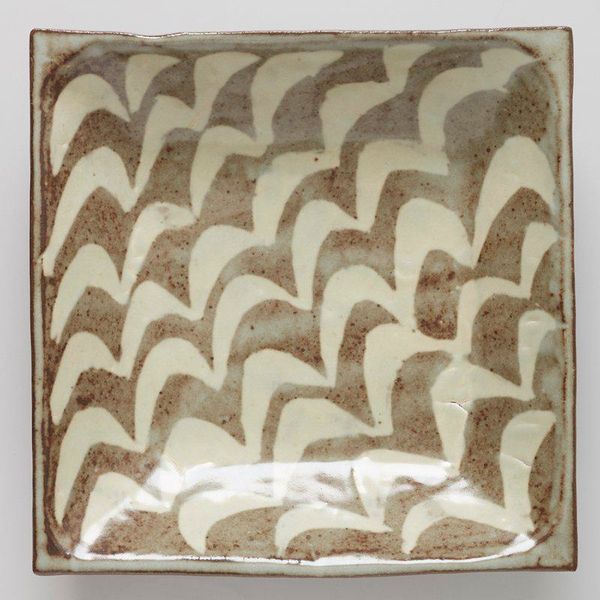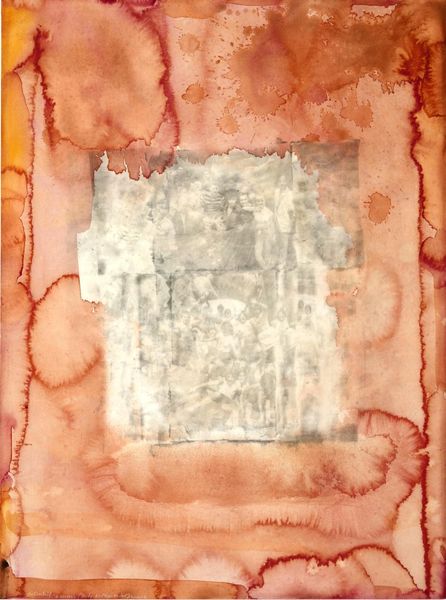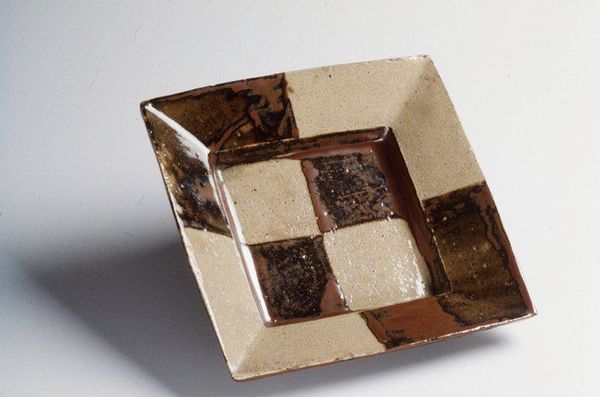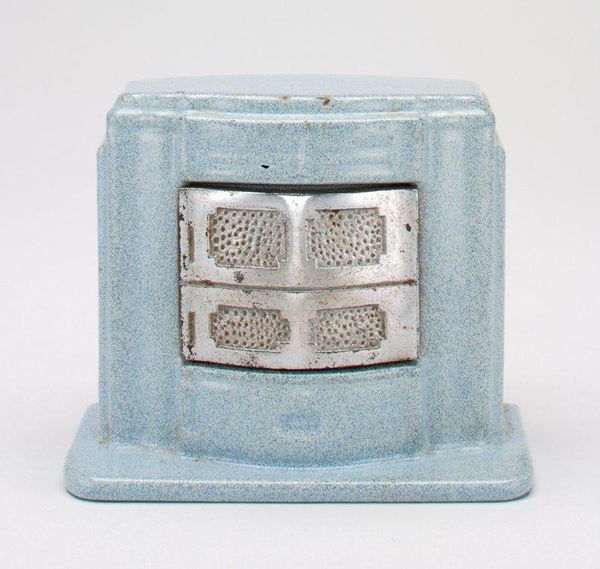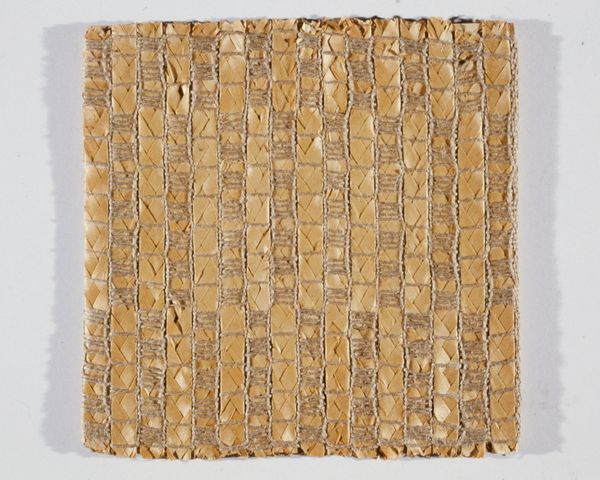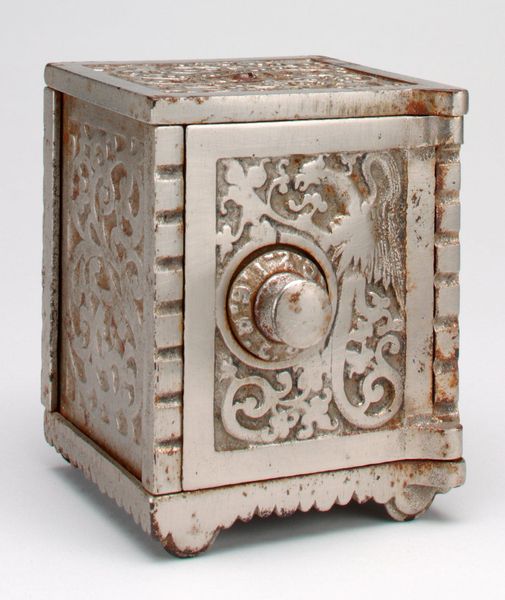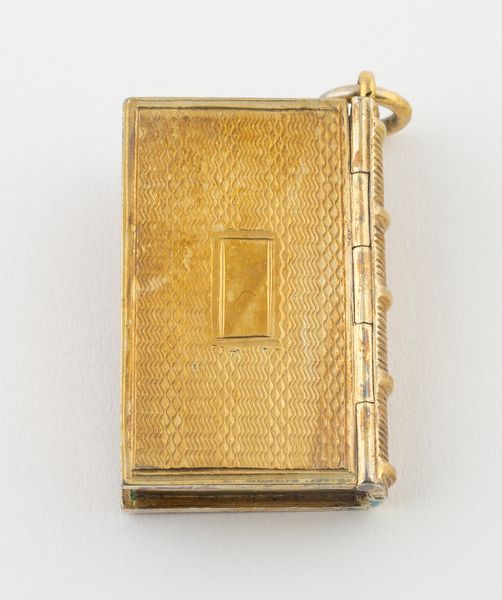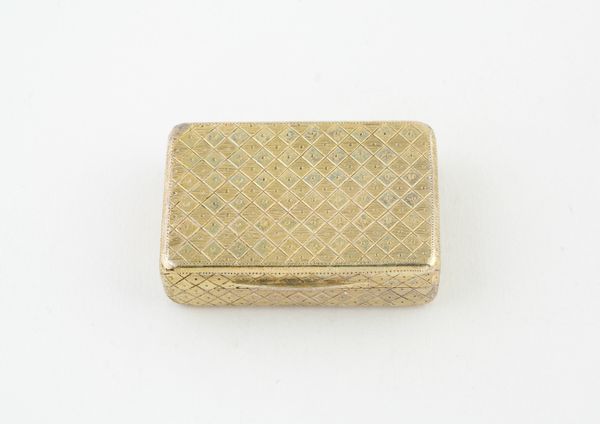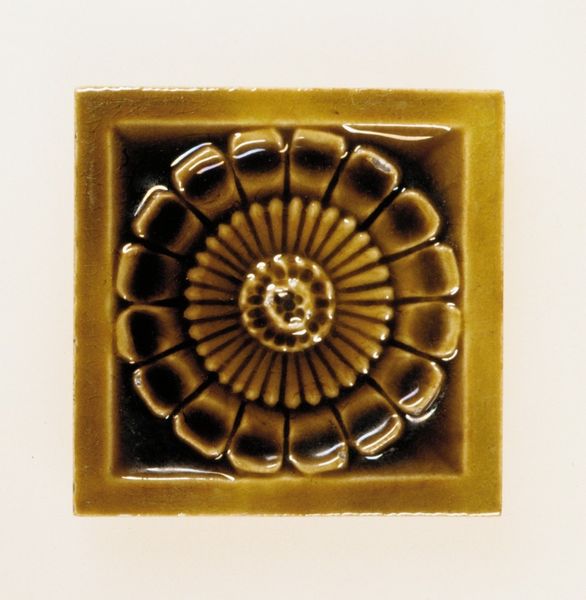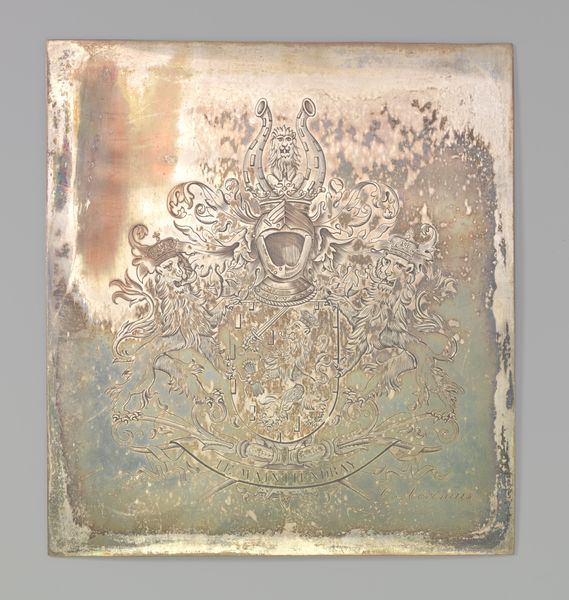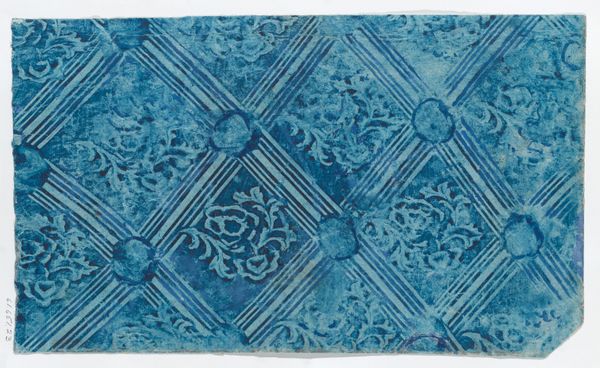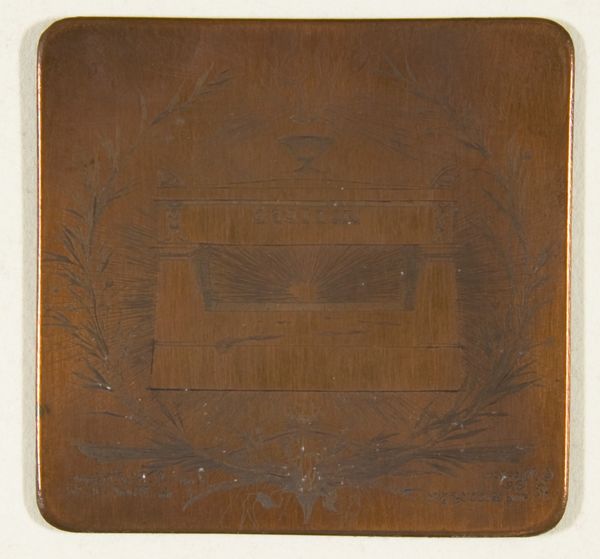
ceramic, earthenware
#
pottery
#
asian-art
#
ceramic
#
japan
#
earthenware
#
stoneware
#
ceramic
#
wooden texture
Dimensions: 1 7/8 x 8 3/4 x 8 7/8 in. (4.76 x 22.23 x 22.54 cm)
Copyright: No Known Copyright
Editor: Here we have Shimaoka Tatsuzo's "Slip-inlaid rope-pattern square dish," from the early 1990s, crafted from earthenware and stoneware. The floral pattern in the center feels so delicate against the rough texture of the piece. How would you interpret this piece, especially regarding its materiality? Curator: The real story here lies in the labor and processes involved. Shimaoka was designated a Living National Treasure in Japan, which often overshadows how rooted his work was in the mingei folk-art movement. Consider the 'rope-pattern' itself—a direct imprint of the tools, a deliberate highlighting of the making process. It isn't just decoration. What does the repetition of this technique tell you? Editor: That he valued process and perhaps the accessibility of art? I can see the tension between craft and "high art" you mentioned. Was the intention for daily use, elevating the everyday? Curator: Precisely. This slip-inlaid technique, where clay is removed and then reapplied, reveals a dedication to craft and history. Tatsuzo was a student of Hamada Shoji who was profoundly influenced by the English potter Bernard Leach. They championed handmade objects. This dish challenges traditional boundaries by making the process as significant as the final form. The consumption, the user’s interaction, completes the art, imbuing value. How do you see the color interacting with the material? Editor: The glaze has an almost industrial hue that starkly contrasts against the hand-carved, individualistic center. It seems to further emphasize the blending of industrial influence and traditional practice. I hadn’t thought about the level of the labor. Curator: And how that labor creates inherent value. Now when you see other studio pottery what questions will you be asking about the means of production? Editor: This has broadened my understanding beyond just aesthetics. I see the interplay between intention, production, and how we value both the object and the labor. Thanks for shedding some light!
Comments
No comments
Be the first to comment and join the conversation on the ultimate creative platform.

